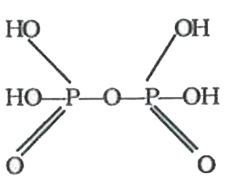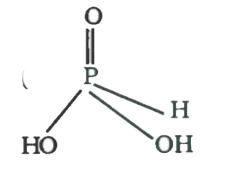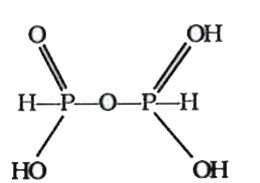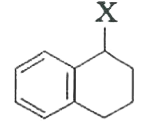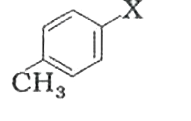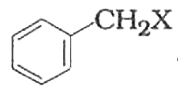Explore topic-wise InterviewSolutions in .
This section includes InterviewSolutions, each offering curated multiple-choice questions to sharpen your knowledge and support exam preparation. Choose a topic below to get started.
| 22401. |
The S-S bond energy is if DeltaH_(f)^(@)(E_(t)-S-E_(t))=-147kJ//mol,DeltaH_(f)^(@)(E_(t)-S-S-E_(t))=-202kJ//mol and DeltaH_(f)^(@)S(g)=+223 kJ//mol: |
|
Answer» 168 kJ |
|
| 22402. |
When fat is heated with NaOH the substances formed are : |
|
Answer» OIL and `Na_2CO_3` |
|
| 22403. |
Which of the following is not present in a nucleotide ? |
|
Answer» CYTOSINE |
|
| 22404. |
Using IUPAC norms, write the systematic names of the following: [Co(NH_(3))_(6)]Cl_(3) |
| Answer» SOLUTION :HEXAAMMINECOBALT(III) CHLORIDE | |
| 22405. |
What is hybridiation of metal involved in a diamagnetic sodium nitroprussaide ? |
|
Answer» `sp^(3)` HYBRIDIZATION of Fe is `d^(2)sp^(3)`. |
|
| 22406. |
Which one of the following reactions of xenon compounds are not feasible ? |
|
Answer» `3 XeF_(4) + 6 H_(2)O RARR 2Xe + XeO_(3) + 12 HF + 1.5 O_(2)` |
|
| 22407. |
What type of linkage is responsible for the formation of proteins ? |
| Answer» | |
| 22408. |
Which one of the following methods is suitable for the preparation of teri-butyl ethyl and why? (ii) (CH_(3))_(3)Coverset(-+)(O)k+CH_(3)CH_(2)-Cl rarr CH_(3)CH_(2)OC(CH_3)_(3) |
|
Answer» Solution :The `S_(N)2` REACTION that occurs between an alkoxide and an alkyl halide (WILLIAMSON synthesis) is very suscepitble to STERIC hindrance. Since a tertiary alkyl chloride is used in method Undergoes `S_(N)2` reaction smoothly due to much less steric hindrance at the reacting CENTRE. Therefore, this method is suitable for the preparation of tert-butyl ethyl ether.  . .
|
|
| 22409. |
The sweetest artificial sugar among the following is |
|
Answer» aspartame |
|
| 22410. |
Which of the following pairs of ions is isoelectronic as well as isostrutural ? |
|
Answer» `CO_(3)^(2-), NO_(3)^(-)` `ClO_(3)^(-)` ion has 42 electrons (17 + 3 `xx` 8 + 1) and Cl is `sp^(3)`-hybridized, while `SO_(3)^(2-)` also has 42 electrons and S is `sp^(3)`-hybridized. Thus, `ClO_(3)^(-) and SO_(3)^(2-)` are also isoelectronic and isostructural, i.e., option (d) is correct. |
|
| 22411. |
Which one of the following pairs of isomers and types of isomerism are correctly matched ? (i) [Co (NH_(3))_(5) (NO_(2))] Cl_(2) and [Co(NH_(3))_(5) (ONO)] Cl_(2) ...(Linkage) (ii) [Cu (NH_(3))_(4)][PtCl_(4)] and [Pt(NH_(3))_(4)][CuCl_(4)]...(Coordination) (iii)[PtCl_(2)(NH_(3))_(4)] Br_(2) and [PtBr_(2) (NH_(3))_(4)] Cl_(2)...(lonization) Select the correct answer using the codes given below: |
|
Answer» (II) and (III) |
|
| 22412. |
Which of the following statements(s) is (are) correct with reference to the ferrous and ferric ions? |
|
Answer» `Fe^(3+)` gives brown COLOUR with potassium FERRICYANIDE. The red colouration that appears in case of `Fe^(3+)` ions on REACTION with potassium thiocyanate (KCNS) is due to formation of `[Fe(CNS)_(3)]` `Fe^(3+) + 3 KCNS to underset("Ferric thiocyanate (red)") ([Fe(CNS)_(3)]) + 3K^(+)` |
|
| 22413. |
Write one use of dopamine and atropine alkaloid. |
|
Answer» SOLUTION :DOPAMINE : NEUROTRANSMITTER Atropine ALKALOID : `0.5-1.0%` solution ophthalmic examination. |
|
| 22414. |
Which catalyst is used in the hydrolysis of urea? |
|
Answer» micoderma |
|
| 22417. |
Which of the following would be paramagnetic ? |
| Answer» Answer :D | |
| 22418. |
The size of particulates of H_2SO_4 fog lies in the range : |
|
Answer» ` 5 -100 NM` |
|
| 22419. |
What happens when vapour of formic acid are alone passed over MnO at 673 K ? |
|
Answer» Solution :When vapours of FORMIC ACID alone are PASSED over MnO at 673 K, formaldehyde is produced. `UNDERSET"(formic acid)"(2HCOOH)overset"MnO/673K"(RARR)underset"(Formaldehyde)"(HCHO+CO_2+H_2O)` |
|
| 22420. |
Which noble gas is not easily to liquefy |
|
Answer» Ne |
|
| 22421. |
Which of the following arrangements represents the increasing order (smallest of largest) of ionic radii of the given species O^(2-),S^(2-),N^(3-),P^(3-)? |
|
Answer» `O^(2-) LT N^(3-) lt S^(2-), P^(3-)` `O^(2-)ltN^(3-)ltS^(2-)ltP^(3-)` |
|
| 22422. |
Which ion has the maximum magnetic moment ? |
|
Answer» `Mn^(3+)` |
|
| 22423. |
Which class of compounds shows H-bonding even more than in alcohols |
|
Answer» Phenols |
|
| 22424. |
Which one of the following has the highest boiling point? |
|
Answer» `CH_(3)CH_(2)CH_(2)CH_(2)CH_(3)` |
|
| 22425. |
Which of the following is homocyclic compound :- |
|
Answer» FURAN |
|
| 22426. |
Which one of the following is different from others? |
|
Answer» DANIEL cell |
|
| 22427. |
Write IUPAC name of the complex: Na_(3)[Cr(OH)_(2)F_(4)] |
| Answer» SOLUTION :SODIUM tetrafluoridodihydroxochromate(TIT). | |
| 22428. |
Which one of the following metals is extracted by a carbon reduction process ? |
|
Answer» Sodium `Fe_(2)O_(3) +3C to 2Fe+3CO ` `Fe_(2)O_(3)+3CO to underset("Iron")(2Fe)+3CO_(2)` |
|
| 22429. |
The standard electrode potential for the following reaction is + 1.33V.What is potential at pH=2.0? Cr_2O_7^(2-) (aq. 1M) + 14H^(+)(aq) + 6e^(-) to 2Cr^(3+) (aq. 1M0 + 7H_2O(l) |
|
Answer» `+1.820V ` `= 1.33 - (0.0591)/(6) log""((1)^(2))/((1) XX (10^(-2))^(14))= 1.33 + (0.0591)/(6) log 10^(-28) = 1.33 + (0.0591)/(6) xx (-28)` ` = 1.33 to 0.2788 = 1.05212 V ` |
|
| 22430. |
Which of the following statement is not correct about P_(2) ? |
|
Answer» It will GIVE non-resolvable PRODUCT with MeMgBr |
|
| 22431. |
The solution containing 4g of KBr dissolved in 100 g of water freezes at - 1.24^(@)C. The molar mass of KBr is (K_(f) = 1.86 K kg "mol"^(-1) |
|
Answer» 102 `= 2 xx (1.86 xx 4)/(1.24 xx 100) xx 1000 = 120` `M_(2) "For" KBr = 39 + 80 = 119` |
|
| 22432. |
The stability of particular oxidation state of a metal in aqueous solution is determined by |
|
Answer» Enthalpy of SUBLIMATION of the METAL |
|
| 22433. |
Which of the following reagents cannot be used to oxidize primary alcohols to aldehydes? |
|
Answer» CRO3 in ANHYDROUS medium |
|
| 22434. |
Which of the following reagents will convert nitromethan into methyl amine : |
|
Answer» `Zn//HCl` |
|
| 22435. |
Why are the group - 16 elements called chalcogens? |
| Answer» Solution :Chalcogens means ore FORMING. The elements of group - 16 are called chalcogens because many METALS are found as OXIDES and sulphides and a few as selenides and tellurides. | |
| 22436. |
Whichbranchedchainisomer of thehydrocarbonwithmolecularmass720 givesonlyoneisomer ofmonosubtitued alkylhalide ? |
|
Answer» NEOPENTANE |
|
| 22437. |
Which of the following complexes are heteroleptic ? |
|
Answer» `[Cr(NH_(3))_(6)]^(3+)` |
|
| 22438. |
Write major product in the following reactions : (a) F_(3)C-CH=CH_(2)+Hirarr (b) CV_(6)H_(5)-CH=CHCH_(3)+HBr overset("Peroxide")rarr (c) CH_(3)CH=underset(CH_(3))underset(|)C-CH_(3)+CHBr_(3)overset("Peroxide")rarr (d) C_(6)H_(5)-CH=CH_(2)+B_(2)H_(6) underset(NaOH)overset(H_(2)O_(2))rarr (e) CH_(3)-CH=CH-CH=CH_(2)underset(520^(@)C)overset(HCl)rarr |
|
Answer» |
|
| 22439. |
Which of the following is amphoteric oxide : Mn_(2)O_(7),Cr_(2)O_(3),CrO,V_2O_5,V_2O_4 |
|
Answer» `V_2O_5,Cr_2O_3` |
|
| 22440. |
What is the difference between a nucleoside and a nucleotide ? |
Answer» Solution :A nucleoside is formed when 1- position of a pyrimidine (cytosine , thymine or URACIL) or 9-position of a purine (guannine or adenine) base is ATTACHED to C-1 of sugar (ribose or deoxyribose ) by a `beta`-linkage. Thus , in general , nucleosides may be represented as : Sugar -Base. For EXAPLE , STRUCTURE (I) represents a nucleoside. 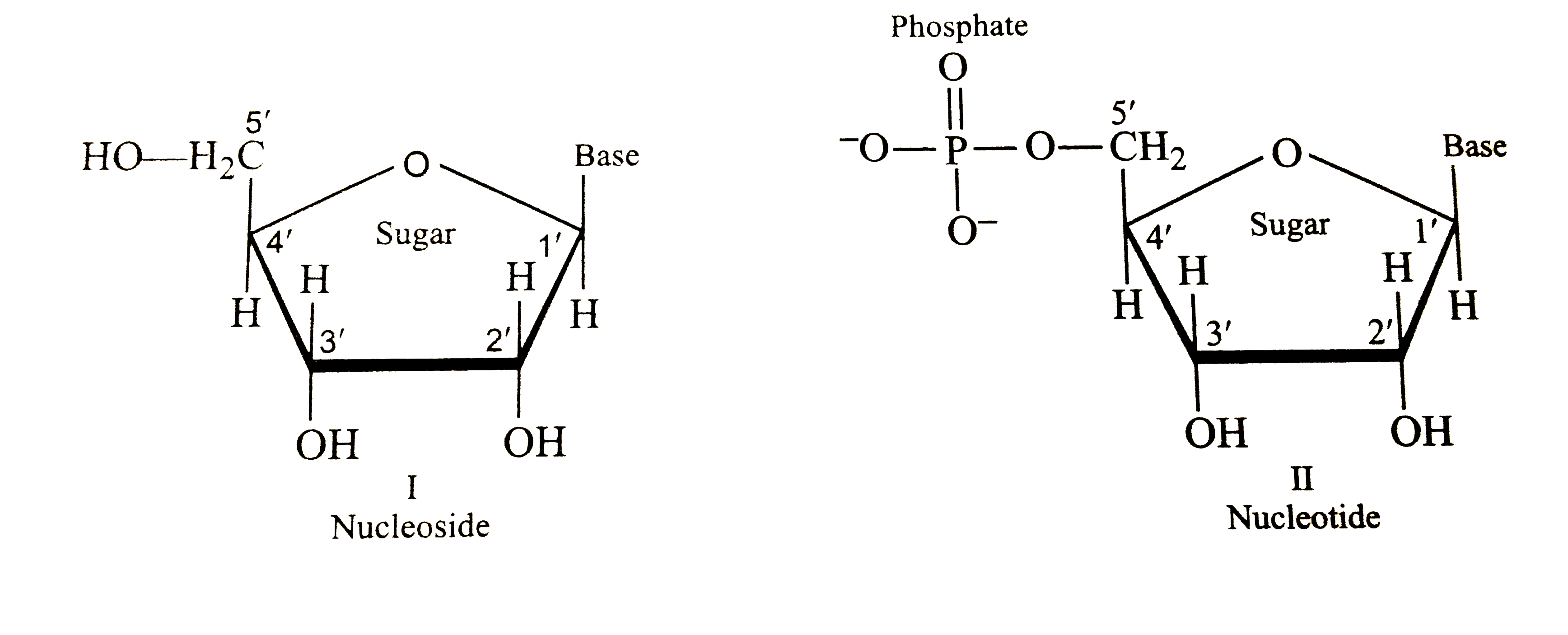 A nucleoside contains all the THREE basic components of nucleic acids ,i.e., a phosphoric acid group , a pentose sugar and a nitrogenous base. These are obtained by estertification of `C_(5)'-OH` group of the pentose sugar by phosphoric acid. Thus , in general , a nucleotide is represented as `"Sugar -Base" -O-overset(O)overset(||)underset(O)underset(||)P-OH` For example , structure (II) represents a nucleotide. |
|
| 22441. |
What prompted Bartlett to the discovery of noble gas compounds ? |
| Answer» Solution :The IONISATION enthalpy of Xe is similar to that of `O_2`. He FIRST prepared the compound `O_2^(+) PtF_6^(-)`. It PROMPTED Bartlett to prepare compound in which `O_2` of `O_2^(+)PtF_6^(-)` could be replaced by Xe. This is how `Xe^(+) PtF_6^(-)` was prepared. | |
| 22442. |
To get a n-type semiconductor from silicon, it should be doped with a substance with valency |
| Answer» Solution :Impurity with HIGHER valency than ATOMS of SEMICONDUCTORS results in n-type of semi conductor. | |
| 22443. |
The time taken for 10% completion of a first order reaction is 20 mins. Then for 19% completion, the reaction will take |
|
Answer» 40 mins or `20 = (2*303)/(k)log""(100)/(90)` In 2ND case, `t= (2*303)/(k)log""(a)/(a-0*19a)` `= (2*303)/(k) log ""(100)/(81)=(2*303)/(k)log((10)/(9))^(2)""…(ii)` Eqn. (ii) Eqn. (i) gives `(t)/(20) =2` or `t = 40 min.` |
|
| 22444. |
Which equation is true Langmuir adsorption isotherm at low pressure? |
|
Answer» <P>`(x)/(m)=(1)/(n)XXP` For Langmuir adsorption `(x)/(m)=(ap)/(1+bp)` If PRESSURE is lower then, p = 0 `therefore""bp=0` `therefore""1+bp=1` `therefore""(x)/(m)=(ap)/(1+bp)=(ap)/(1)` So, OPTION (B) is RIGHT |
|
| 22445. |
Which process occurs in the electrolysis of aqueous solution of nickel chloride at nickel anode: |
|
Answer» `Ni^(2+) +2E RARRNI` |
|
| 22446. |
which of the following is a highly basic oxide |
|
Answer» `SO_2` |
|
| 22447. |
Under what reaction conditions (acidic, basic), the coupling reaction aryldiazonium chloride aniline is carried out? |
|
Answer» Solution :Under strongly basic conditions, benzenediazonium CHLORIDE is CONVERTED into diazohydroxide/diazoate both of which are not electrophilic and hence do not couple with aniline. `C_(6)H_(5)-overset(+)(N)-=NC l^(-)+OH^(-)hArr underset("Diazohydroxide (does not couple)")(C_(6)H_(5)N=N-OH) overset(NaOH)hArr underset("Sodium diazoate (does not couple)")(C_(6)H_(5)-N=N-O^(-)NA^(+))` On the other hand, in highly acidic conditions, aniline gets converted into anilinium ion. as a result, aniline is no longer nucleophilic acid hence will not couple with diazonium chloride. therefore, the reaction is carried out under MILD conditions, i.e., pH 4-5. `underset("Aniline")(C_(6)H_(5)NH_(2))+H^(+) to underset("Anilinium ion (does not couple)")(C_(6)H_(5)-overset(+)(N)H_(3))` |
|
| 22448. |
Which of the following does not contain C_(sp^(3))-X bond? |
|
Answer»
|
|
| 22449. |
Which one of the following is not a bioindicator of water pollution |
|
Answer» Sludge-worms |
|
| 22450. |
Write the monomer units of bakelite. |
| Answer» SOLUTION :PHENOL `(C_6H_5OH)` and FORMALDEHYDE (HCHO). | |

